As mentioned in previous posts, about six months ago I took on the role of Events Coordinator alongside two others for the Association of Lighthouse Keepers (ALK). Although I had attended their AGM in South Wales last year, it was only a matter of time before a trip coordinated by the new team would take place. Today the time finally arrived in the form of a two-day event based in Oban.
The blue sky made an early appearance today, just in time for our journey over to Lismore lighthouse on the small island of Eilean Musdile, not (as the name suggests) on the island of Lismore itself. I’d previously landed on Eilean Musdile and seen the lighthouse at close range in 2015, but this time we were going to get inside the tower as well as meeting the couple who now own the cottages. Lismore is one of those lighthouses that you can’t go past on a ferry without noticing. The lady who now owns the cottages on the island said that you can almost see the ferry tilting over as people rush to take pictures of the lighthouse before it then starts to tip the other way as they get closer to Mull and Duart Castle.
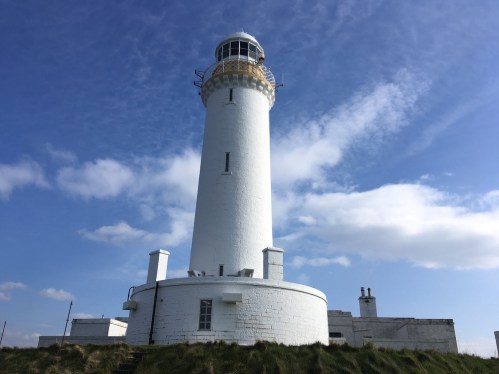
The boat ride over to the lighthouse with Coastal Connections, who also took us over last time, was good and it was nice to catch up with Struan, today’s skipper, and chat to my ALK friends. Landing on the island is a fairly dignified affair and as soon as you are there you are captivated by just how beautiful the place is. The owners of the cottages clearly do a fantastic job of keeping the island from getting overgrown and too wild, while also maintaining its natural beauty. When the owners first arrived, they knew there must have been a path there somewhere that joined the top end of the island (where the stone for the lighthouse arrived), across the beautifully constructed bridge, past the slipway and to the tower. The owner described how he spent a good few years (they are usually on the island for around 10 weeks every year) finding the path again and one of his jobs each year is to maintain the path. Another reason for doing this was so that nesting birds on the island could remain undisturbed in the longer undergrowth. They have also installed a small wind turbine to provide electricity to the cottages as well as pumping the fresh water from the well on the island to their houses.
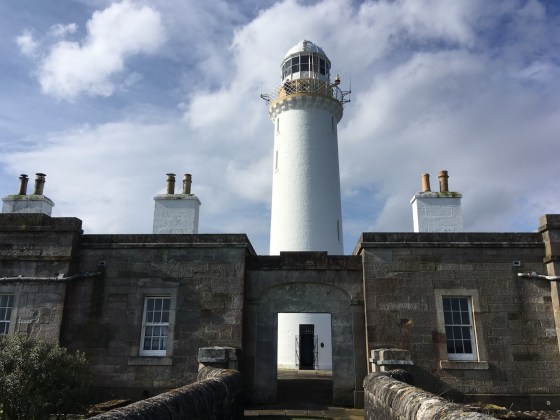
The path that takes you to the lighthouse is a perfect match for the stunning white tower at the end of it. Before we got carried away with wandering up the tower we decided to walk down beyond the tower to get some pictures of it standing tall. There really is no angle that Lismore lighthouse doesn’t look awe-inspiring from. An incredible piece of architecture from Alan Stevenson and his attention to detail is evident at the top of the tower. With perfectly carved features inside the lantern room as well as even more impressive additions when you step outside the door at the top, you realise the thought that must have gone into so many elements of this amazing structure. I got chatting to Neil Wright, one of the Northern Lighthouse Board’s technicians who has recently been to and worked at the Flannans, Sanda, Skervuile and the Bell Rock. Neil posts some fantastic pictures on Twitter of parts of these lights that the general public would never be able to see. Needless to say we chatted for a while about his work with the NLB, where it has taken him and he also showed us how the remote monitoring of the lighthouses works. It is incredible to see just what they can find out about a lighthouse from just a laptop.
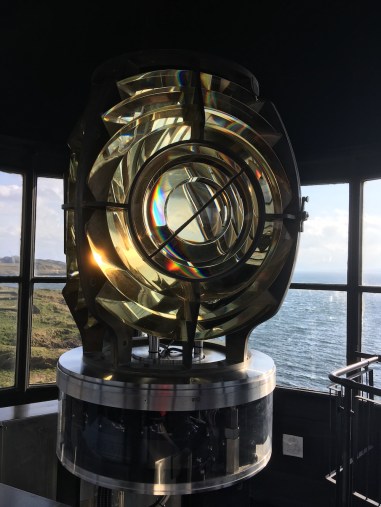
Neil also pointed out how the lighthouse differs from many others as it has rectangular window panes rather than triangular, which is related to the characteristic of the light. The little lens in there is small but perfectly formed allowing for plenty of space to wander around. The lighthouse has not been upgraded to an LED light…which means it still has a number of buttons and panels inside. Neil told us that he was, sadly, responsible for the change of the light at Noss Head from a rotating lens to an on/off LED. They have recently upgraded Duncansby Head, but fortunately have decided to retain the rotating lens and just replace the lamp with an LED. We were informed that this will also be the case at Dunnet Head in the coming months. I am pleased to learn that the light will still work with a rotating lens, but I will miss the warm colour of the light as it is at the moment.
Back down at the bottom of the tower we stopped off to have a cup of tea with the couple who own the lighthouse. The cottage is very spacious with large rooms, a wide corridor and windows that allow plenty of natural light in. You can tell that they have maintained some of the original style of the cottages while also adding their own personal touches here and there. They are a really lovely couple and were incredibly welcoming considering they had 20 lighthouse enthusiasts wandering about.
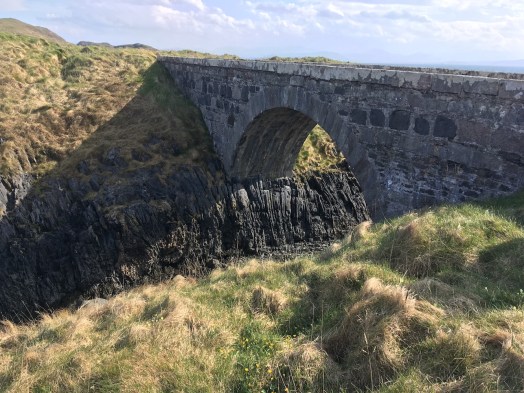
Before heading back to the slipway, we took a short walk to the top of the island where you can look across the short stretch of water to Lismore itself and the snow-capped hills beyond. It felt a little bit like heaven, and I found that the longer you stayed there the more you wanted to stay. But leave we had to unfortunately. It was a very enjoyable and memorable morning at a wonderful place which I would return to in a heartbeat.
Back in Oban we had lunch before the second instalment of the day: a tour of the Northern Lighthouse Board’s Oban Depot and Buoy Yard. I always get excited when I see the Northern Lighthouse Board logo and it can be seen everywhere here! We were shown around by the Depot Manager initially who gave us a tour of the storage facility. When you first walk in all you see is large shelves filled with wooden boxes that appear at first glance to be of little interest. It’s only when you take a closer look that you notice that each box has the name of a lighthouse on it and, in some cases, the boxes contain the old lenses from the towers. Among the names written on the boxes were Calf of Man, Strathy Point, Sule Skerry, Barra Head, Stoer Head, Chicken Rock, Ruvaal and Rona. It was clear that there is a big plan for upgrading Eilean Glas lighthouse as we saw its new kitchen, tins of paint and various other items all destined for that beautiful place.
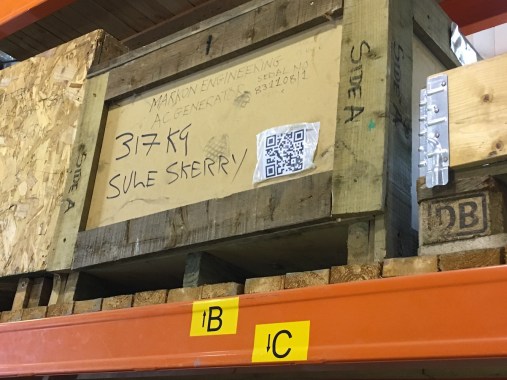
The Buoy Yard gives you some idea of the scale and amount of work that takes place there. Every eight years the buoys are brought in and cleaned and then go through various other stages before being re-painted ready to go back out. It was really interesting to see the range in types of buoy and how big they actually are. In comparison to most things you see at sea buoys always look so small, but they aren’t small at all. I was particularly interested to see an example of the buoys used to mark wrecks.
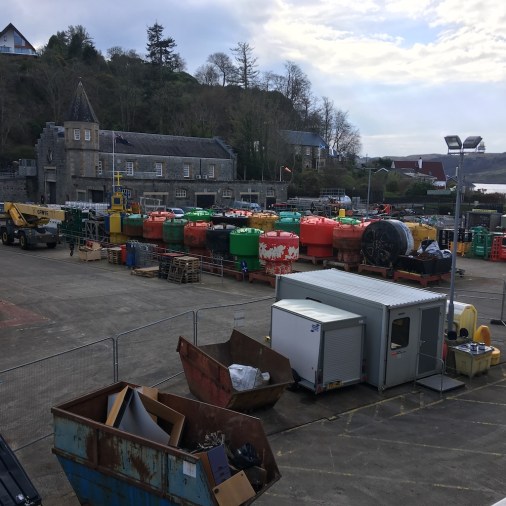
The next part of the tour involved Neil showing us the variety of LED lights that the Northern Lighthouse Board currently use. From his talk it became very clear just how quickly technology is progressing and as Neil said himself it will be interesting to see the types of lights they have lined up there in 5 years’ time. They also have some of the old lamps in storage in this area, including those from Cailleach Head and Lady Isle. It is clear that the shelves here are already becoming full and, over time, there will only be more and more coming in. Eventually another long-term solution for their storage/use will need to be found and I really hope there is something that can be done with them. While they aren’t as impressive as the Fresnel lens, for example, they are a big part of lighthouse heritage.
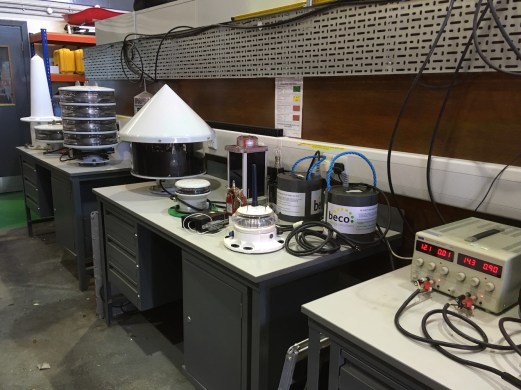
It was very obvious before we even arrived at the Depot that the Northern Lighthouse Board’s maintenance vessel, Pharos, was there. I recall the first time I saw Pharos and that was at the Bell Rock. Every time I’ve seen it since it’s been from a distance and you don’t realise just how big it is until you are standing right next to it! We were on our way towards the exit when we were delighted to hear that the captain of Pharos was happy to give us a tour. I’m not going to lie, I dashed back down the gangway before they changed their mind! Getting on board Pharos was a real treat for me. It was certainly not somewhere I ever thought I would get a chance to look around and here we were being offered the chance to do just that. First we set off for the helideck – what a place that must be when the helicopter comes into land. I’ve obviously stood on a number of helipads at some of the more remote lighthouses on Scottish islands, but this was somehow different.
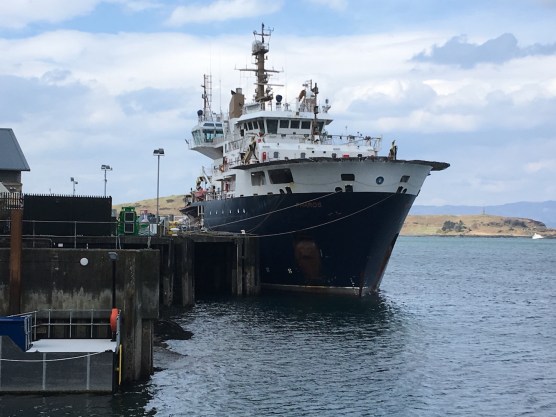
We were also shown the deck above where the crew communicate with the helicopter crew as they are coming in to land. We then looked down over the winch area at the back of the boat. The winch is huge, but then it would need to be with so much weight to be lifted in those buoys. Last, but by no means least, we were shown around the bridge where the magic happens. And when I say “magic” it really is magic. Thanks to advances in GPS, weather and sea monitoring the boat can near enough sail itself these days. The paper maps and amount of buttons and levers in the bridge though are a reminder that, if things do go wrong, the manual back up of a person is still very much a requirement. We finished off our incredible tour of this vessel with a group picture alongside the Northern Lighthouse Board’s longest-serving captain. What a special opportunity that was and, as much as I enjoyed seeing the maintenance vessels before, I appreciate them on a whole new level now.
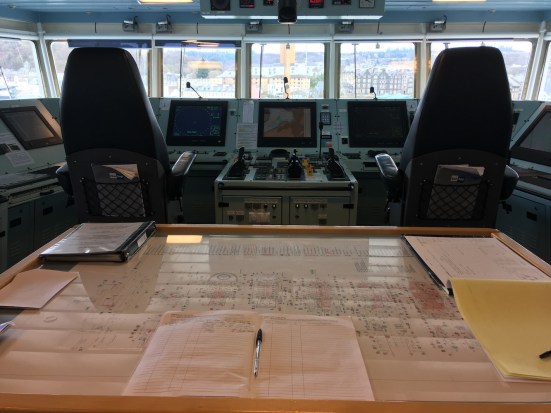
More adventures to come tomorrow! 🙂

A lovely post Sarah and I reckon there are now probably skid marks on the gangplank you moved that fast. I am glad that your first ‘event’ is going so well. Look forward to more tomorrow. John
Sent from my iPad
>
Oh forgot to say when I read this Sarah. The island we can’t name but it is ok to take a picture of its name?!
Ok I don’t think there will be anymore ‘oh I forgot’ emails today, unless I have forgotten something of course 🤓
Sent from my iPad
>
John, I had three option for pictures in that place: either the boxes containing the old Calf of Man lens, numerous cardboard boxes with different lighthouse names on, or this one. I had to choose this one. Pictures of the place that cannot be named, even if it just it’s just its name on a box, are more than acceptable. Still makes me go funny though!